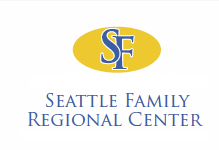
What is EB-5?
USCIS administers the Immigrant Investor Program, also known as “EB-5,” created by Congress in 1990 to stimulate the U.S. economy through job creation and capital investment by foreign investors. Under a pilot immigration program first enacted in 1992 and regularly reauthorized since, certain EB-5 visas also are set aside for investors in Regional Centers designated by USCIS based on proposals for promoting economic growth. (Source from USCIS.gov)
EB-5, short for Employment Based Fifth Preference is a United States visa created by the Immigration Act of 1990.
This visa provides a method of obtaining a green card for foreign nationals who invest money in the United States. To obtain the visa, individuals must invest $1,000,000 (or at least $500,000 in a "Targeted Employment Area" - high unemployment or rural area), creating or preserving at least 10 jobs for U.S. workers excluding the investor and their immediate family. If the foreign national investor's I-526 petition is approved, the investor and their dependents (spouse and children under 21 years old) will be granted conditional permanent residence valid for two years. Within the 90 day period before the conditional permanent residence expires, the investor must submit evidence documenting that the full required investment has been made and that 10 jobs have been maintained, or 10 jobs have been created or will be created within a reasonable time period, to become lawful permanent residents.
What is Regional Center?
A Regional Center is defined as any economic entity, public or private, which is involved with the promotion of economic growth, improved regional productivity, job creation and increased domestic capital investment. The organizers of a regional center seeking the “Regional Center” designation from USCIS must submit a proposal, supported by economically or statistically valid forecasting tools, showing:
- how the regional center plans to focus on a geographical region within the United States. The proposal must explain how the regional center will promote economic growth in that region.
- How, in verifiable detail (using economic models in some instances), jobs will be created directly or indirectly through capital investments made in accordance with the regional center’s business plan.
- the amount and source of capital committed to the regional center and the promotional efforts made and planned for the business project.
- How the regional center will have a positive impact on the regional or national economy.
(source from USCIS.gov)
Qualifications
EB-5 applicants usually need to meet the following conditions:- Applicant must be at least 18 years old;
- Proof of asset (may include spouse’s asset, inheritance, donation, gambling, etc.);
- Proof of legal source of investment money;
- Health and criminal records.
Application Timeline




